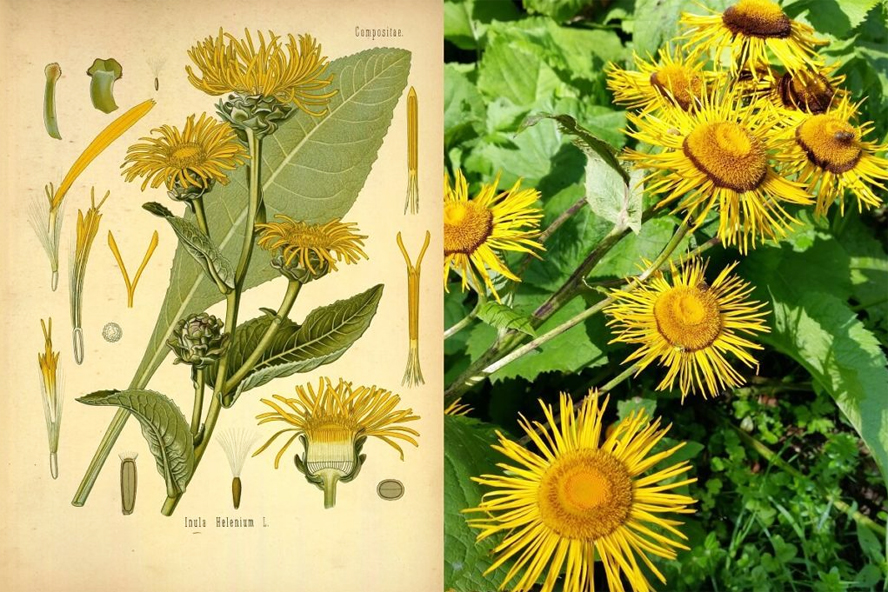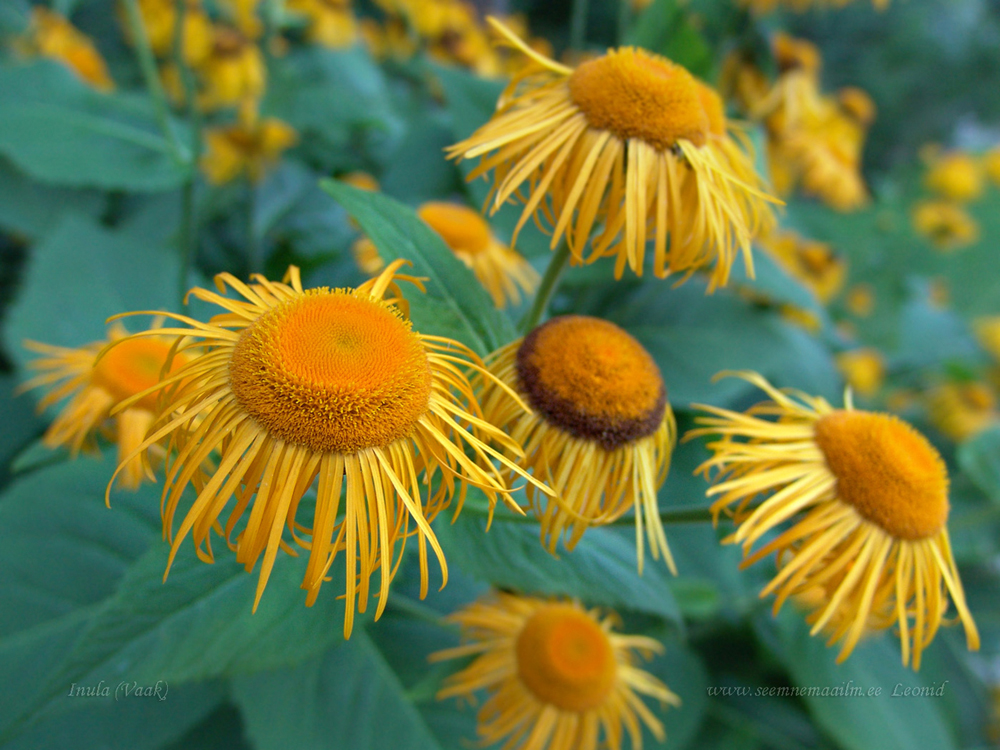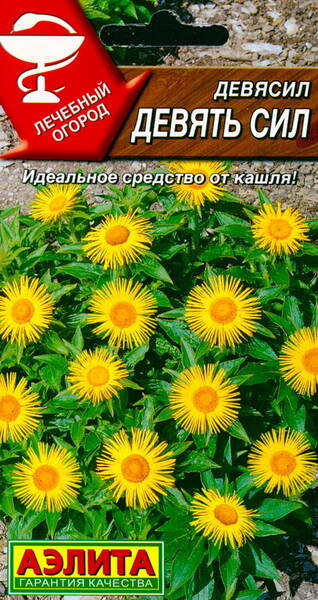Your shopping cart is empty!
Elecampane "Devjat Sil" (Horse-heal)
Elecampane "Nine Forces" - Inula helenium.
Perennial medicinal and ornamental plant. Forms bushes up to 2.5 m high with many inflorescences-baskets 7-8 cm in diameter.
The plants are winter-hardy, drought-resistant, grow slowly, and therefore do not require frequent divisions. They look great in the background of flower beds and are suitable for decorating outbuildings.
Used for diseases of the upper respiratory tract and lungs (bronchitis, tuberculosis), gastrointestinal tract (gastritis), gall bladder, liver, bladder and kidneys.
The plant contains: essential oil, bitters, polysaccharides, inulin, resins, vitamin E. It has a slight antispasmodic effect, bactericidal and cough softening effect. The rhizomes of powerfully developed plants are collected in autumn or spring, cut and dried. Leaves from young plants are air dried.
Dry crushed parts of the plant are used in the form of tea: pour 1 teaspoon into ¼ liter of boiling water and leave for 15 minutes, take 2-4 times a day, 1 cup in small sips.
Agrotechnics.
Seeds are sown in autumn on seed beds or in February-March - on seedlings. Seeds require preliminary stratification: sow the seeds to a depth of no more than 0.5 cm, moisten with a spray bottle, cover with glass and place in the refrigerator (temperature + 5 + 7 ° C). The crops are kept in such conditions for 10-15 days, then transferred to room conditions. It is necessary to monitor crop moisture and ventilation. At a temperature of +18+20°C, seedlings appear on the 10-14th day. If there is no germination, repeat the “cold-heat” technique in the same sequence! Seedlings dive into boxes at the stage of 2-3 true leaves. Seedlings are planted in open ground after 4-6 weeks. Prefers sunny places or light partial shade with loose, non-acidic soil. It can grow in one place for 5-7 years.
Perennial medicinal and ornamental plant. Forms bushes up to 2.5 m high with many inflorescences-baskets 7-8 cm in diameter.
The plants are winter-hardy, drought-resistant, grow slowly, and therefore do not require frequent divisions. They look great in the background of flower beds and are suitable for decorating outbuildings.
Used for diseases of the upper respiratory tract and lungs (bronchitis, tuberculosis), gastrointestinal tract (gastritis), gall bladder, liver, bladder and kidneys.
The plant contains: essential oil, bitters, polysaccharides, inulin, resins, vitamin E. It has a slight antispasmodic effect, bactericidal and cough softening effect. The rhizomes of powerfully developed plants are collected in autumn or spring, cut and dried. Leaves from young plants are air dried.
Dry crushed parts of the plant are used in the form of tea: pour 1 teaspoon into ¼ liter of boiling water and leave for 15 minutes, take 2-4 times a day, 1 cup in small sips.
Agrotechnics.
Seeds are sown in autumn on seed beds or in February-March - on seedlings. Seeds require preliminary stratification: sow the seeds to a depth of no more than 0.5 cm, moisten with a spray bottle, cover with glass and place in the refrigerator (temperature + 5 + 7 ° C). The crops are kept in such conditions for 10-15 days, then transferred to room conditions. It is necessary to monitor crop moisture and ventilation. At a temperature of +18+20°C, seedlings appear on the 10-14th day. If there is no germination, repeat the “cold-heat” technique in the same sequence! Seedlings dive into boxes at the stage of 2-3 true leaves. Seedlings are planted in open ground after 4-6 weeks. Prefers sunny places or light partial shade with loose, non-acidic soil. It can grow in one place for 5-7 years.


Elecampane "Nine Forces", Horse-heal.















